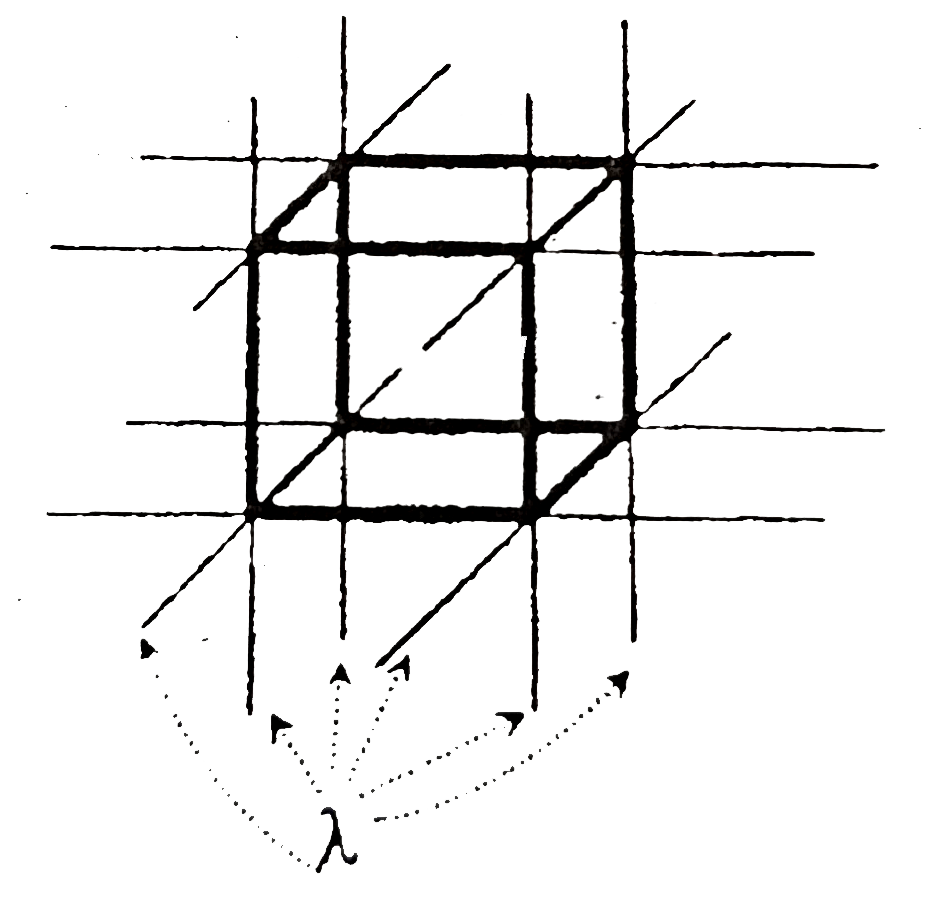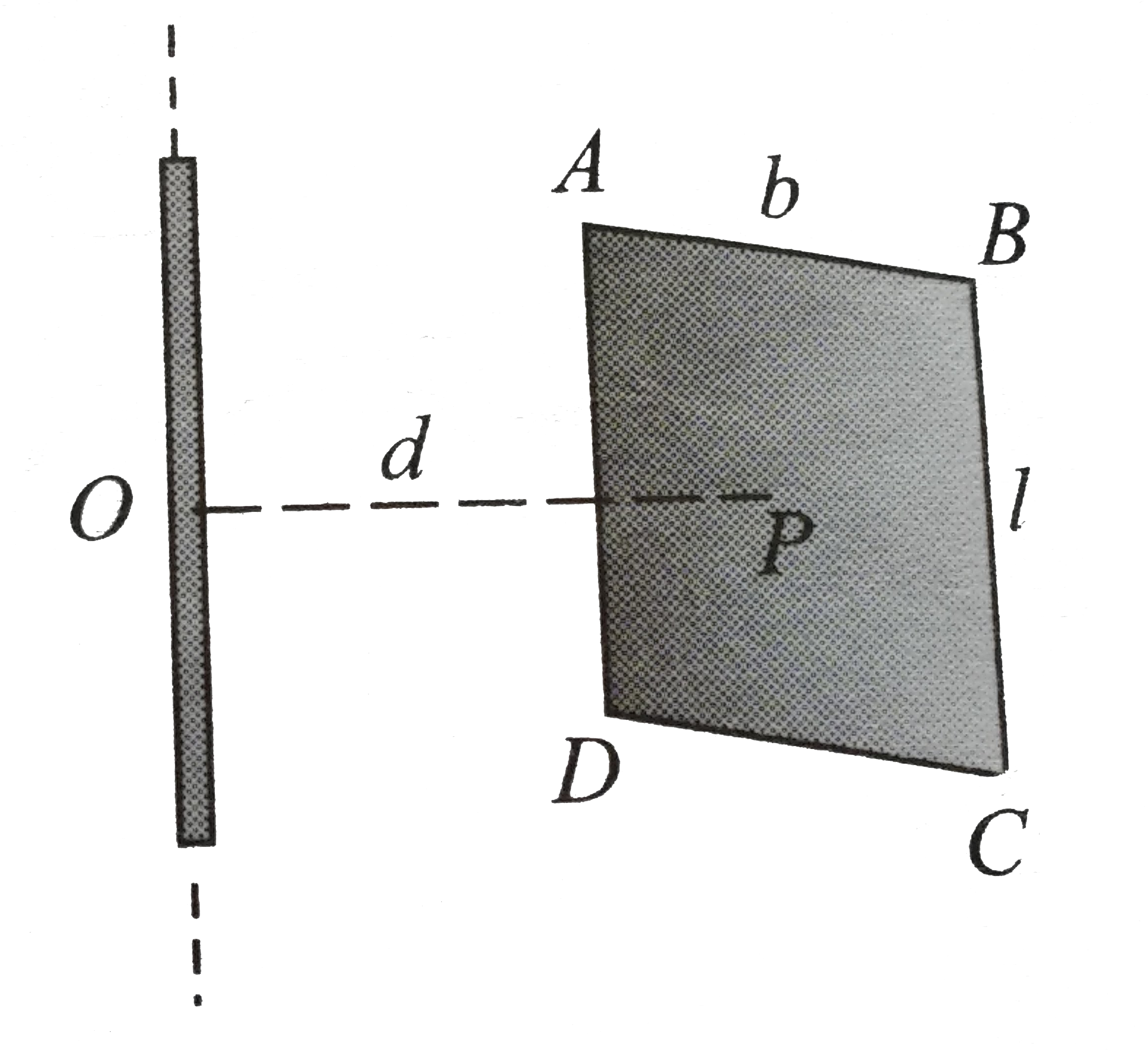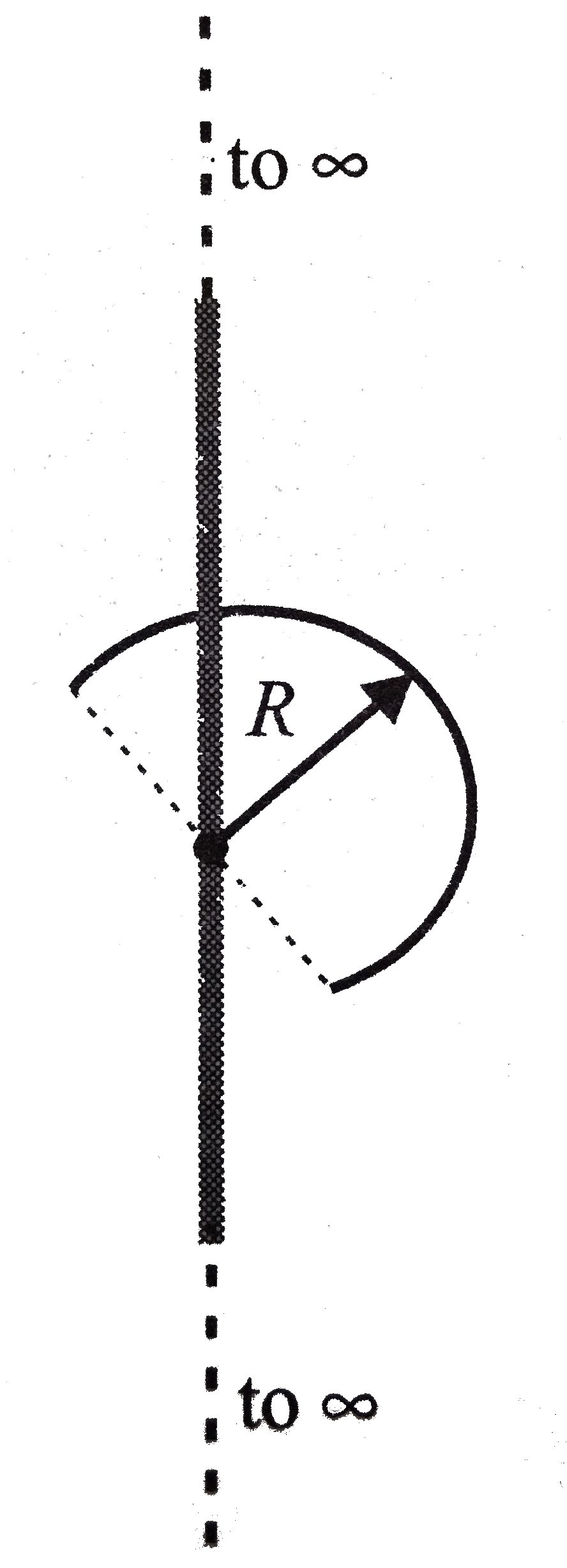Consider an infinite line charge having uniform linear charge density and passing through the axis of a cylinder is removed.

decrease
increases
remains same
cannot say
The correct Answer is:A
a. If portion outside the
cylinder is removed, electric
field at points on curved surface will be decrease.
Topper's Solved these Questions
- ELECTRIC FLUX AND GAUSS LAWBook:CENGAGE PHYSICS ENGLISHChapter:ELECTRIC FLUX AND GAUSS LAWExercise:Multiple Correct
Explore 8 Videos
- ELECTRIC FLUX AND GAUSS LAWBook:CENGAGE PHYSICS ENGLISHChapter:ELECTRIC FLUX AND GAUSS LAWExercise:Comprehension
Explore 36 Videos
- ELECTRIC FLUX AND GAUSS LAWBook:CENGAGE PHYSICS ENGLISHChapter:ELECTRIC FLUX AND GAUSS LAWExercise:Subjective
Explore 12 Videos
- ELECTRIC CURRENT AND CIRCUITBook:CENGAGE PHYSICS ENGLISHChapter:ELECTRIC CURRENT AND CIRCUITExercise:Interger
Explore 8 Videos
- ELECTRIC POTENTIALBook:CENGAGE PHYSICS ENGLISHChapter:ELECTRIC POTENTIALExercise:DPP 3.5
Explore 15 Videos
Similar Questions
For an infinite line of charge having linear charge density λ lying along x-axis the work done in moving a charge q form C to A along CA is

View SolutionTwelve infinite long wire of uniform linear charge density (λ) are passing along the twelve edges of a cube. Find electric flux through any face of cube. ,

View Solution
Knowledge Check
An infinitely long thin wire carrying a uniform linear static charge density λ is placed along the z-axis Fig. The wire is set into motion along its length with a uniform velocity →v=vˆk. Calculate the poynting vector →S=1μ0(→E×→B).
 A−λ2v4π2ε0a2ˆkBλ2v4π2ε0a2ˆiCλ2v4π2ε0a2ˆkD−λ2v4π2ε0a2ˆi
A−λ2v4π2ε0a2ˆkBλ2v4π2ε0a2ˆiCλ2v4π2ε0a2ˆkD−λ2v4π2ε0a2ˆi
The dimensional formula of linear charge density λ is
View SolutionTwo infinite line charges, each having a uniform density λ. Pass through the midpoints of two pairs of opposite faces of a cube of edge L as shown in figure. The modulus of the total electric flux due to both the line charges through the face is ABCD is λL/(kε0) find the value of k ?

View SolutionFind the electric flux crossing the wire frame ABCD of length l, width b, and center at a distance OP = d from an infinite line of charge with linear charge density λ. Consider that the plane of the frame is perpendicular to the line OP

View SolutionA charged particle q of mass m is in wquilibrium at a height h from a horizontal infinite line charge wit uniform linear charge density λ. The charge lies in the vertical plane containing the line charge. If the particle is displaced slightly (vertically) prove that the motion of the charged particle will be simple harmonic. Also find its time period.
View SolutionFind the force experienced by a semicircular rod having a charge q as shown in fig. Radius of the wire is R, and the line of charge with linear charge density λ passes through its center and is perpendicular to the plane of wire.

View SolutionAn infinitely long thin wire carrying a uniform linear static charge density λ is placed along the z-axis Fig. The wire is set into motion along its length with a uniform velocity →v=vˆk. Calculate the poynting vector →S=1μ0(→E×→B).

View SolutionIf linear charge density of a wire as shown in the figure is λ

View Solution